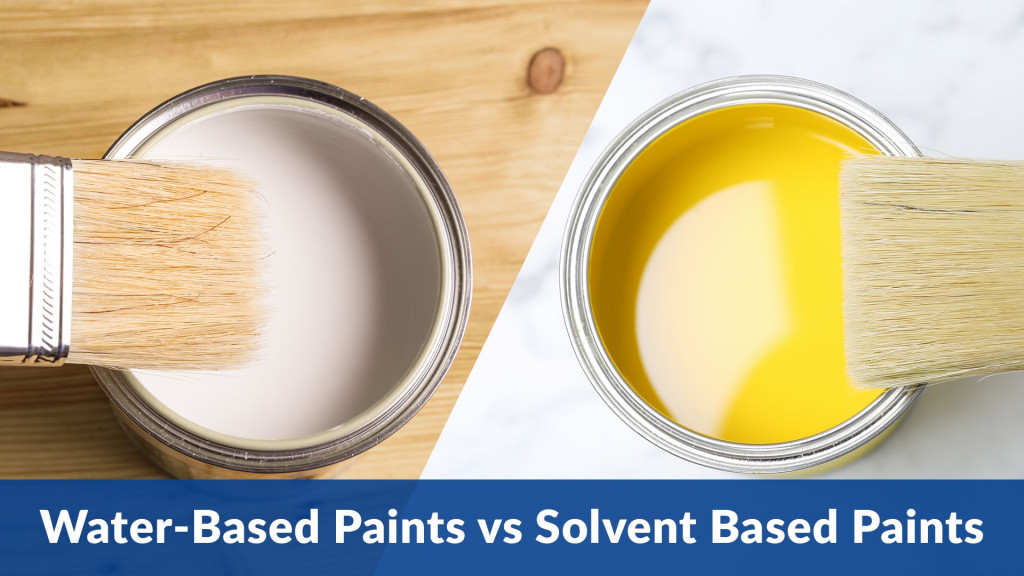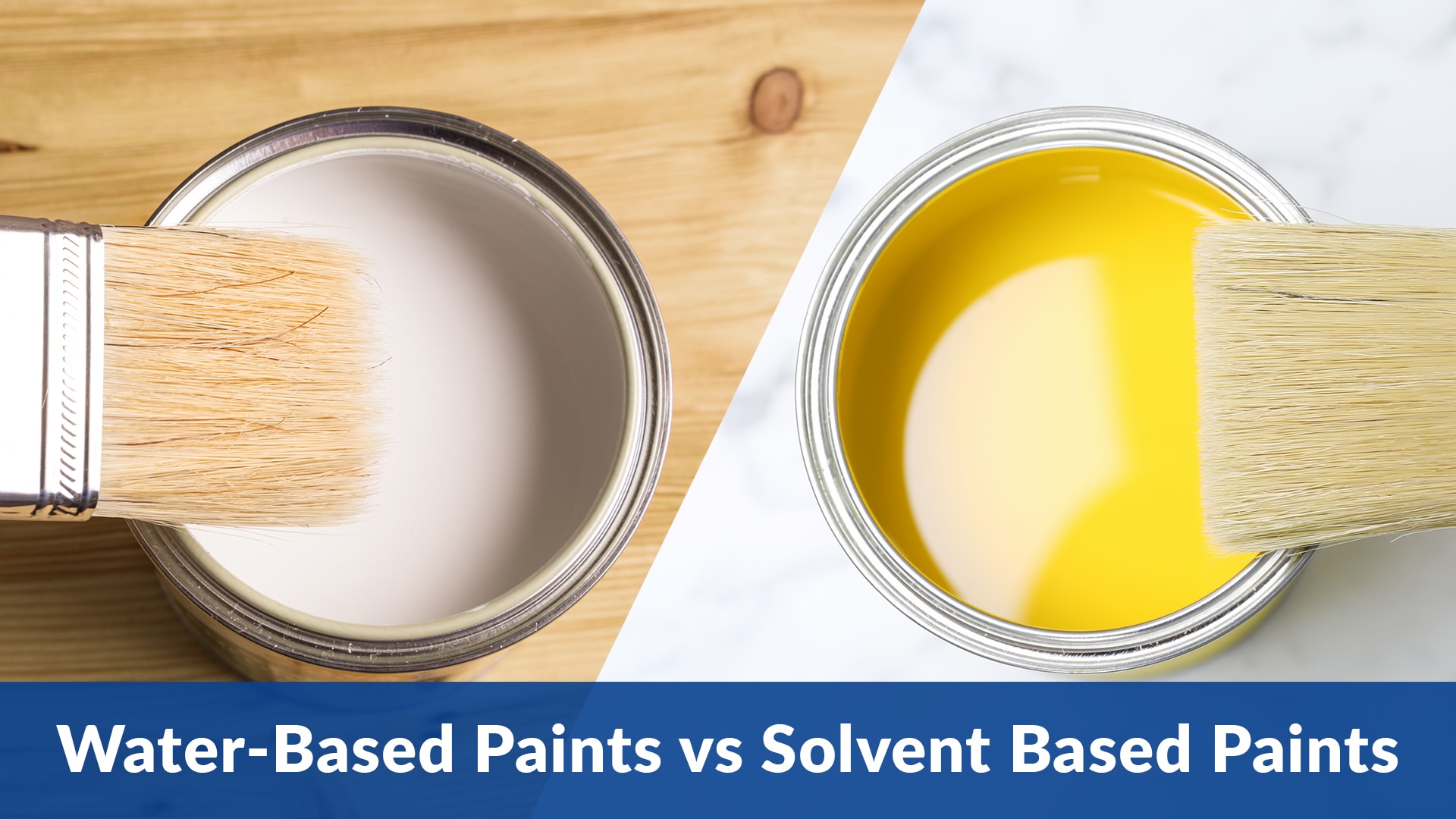Solvent based paint is a type of paint that uses organic solvents as a carrier for the pigment and resin. It is commonly used in industrial and automotive applications due to its durability and resistance to wear and tear.
Solvent based paint is a popular choice in industrial and automotive applications because it provides superior durability and resistance to wear and tear. The paint is formulated using organic solvents, which act as a carrier for the pigment and resin.
This allows for a smooth and even application, as well as quick drying times. Additionally, solvent based paint provides excellent adhesion to a variety of surfaces, making it a versatile option for many different applications. However, it is important to note that solvent based paint can release harmful VOCs (volatile organic compounds) during application and drying, which can be harmful to both human health and the environment. Therefore, proper precautions should be taken when using this type of paint.
Contents
- Introduction To Solvent Based Paint
- Chemistry Behind Solvent Based Paint
- Comparing Water And Solvent Based Paints
- Advantages Of Solvent Based Paint
- Understanding Volatile Organic Compounds
- Application Techniques For Solvent Based Paint
- Maintenance And Care
- Future Of Solvent Based Paints
- Frequently Asked Questions
- Conclusion
Introduction To Solvent Based Paint
Solvent-based paint is a type of paint that uses organic solvents as a medium to bind the pigment and resin together. This type of paint has been widely used for industrial, automotive, and marine applications due to its durability and resistance to harsh environmental conditions.
Key Components
The key components of solvent-based paint include:
- Pigment: Provides color and opacity
- Resin: Forms the film and provides adhesion
- Solvent: Dissolves the resin and controls viscosity
- Additives: Enhance specific properties such as drying time and durability
Paint Vs. Solvent Based Variants
When comparing paint to solvent-based variants, it’s important to note that traditional paint, also known as water-based or latex paint, uses water as a medium instead of organic solvents. Unlike solvent-based paint, water-based paint is more environmentally friendly and emits fewer volatile organic compounds (VOCs) during application.
Chemistry Behind Solvent Based Paint
Solvent-based paints are a type of paint that uses organic solvents as a medium to disperse the resin and pigments. The chemistry behind solvent-based paint provides insight into its unique properties and application. Understanding the role of organic solvents and the drying process is essential in comprehending the science behind this versatile paint type.
Role Of Organic Solvents
Organic solvents in solvent-based paint serve as the carrier for the resin and pigments. These solvents evaporate during the drying process, leaving behind a solid, protective film. The choice of solvent greatly influences the paint’s viscosity, drying time, and environmental impact.
The Drying Process
The drying process of solvent-based paint involves the evaporation of organic solvents, allowing the resin to form a durable coating. This process is crucial in achieving a smooth and even finish. Factors such as temperature, humidity, and airflow can affect the drying rate and overall quality of the painted surface.
Comparing Water And Solvent Based Paints
Solvent based paints contain organic solvents like mineral spirits, toluene, or xylene, which help in the evaporation of the paint. These paints are known for their durability and resistance to harsh weather conditions, making them suitable for outdoor applications.
Differences In Application
When it comes to comparing water-based and solvent-based paints, one of the key differences lies in their application. Water-based paints, as the name suggests, are primarily composed of water as the solvent. They are easy to use and clean up, making them a popular choice for DIY enthusiasts and professionals alike. On the other hand, solvent-based paints use organic solvents, such as mineral spirits or turpentine, as the main component. These solvents give the paint a longer drying time, which can be advantageous for certain applications where a smoother finish is desired. While water-based paints are known for their quick drying time, solvent-based paints often require more time to dry. This longer drying time allows for better leveling and improved adhesion to various surfaces. Additionally, solvent-based paints tend to have a stronger odor due to the organic solvents used. This can be a consideration for those with sensitivities or when working in enclosed spaces. In contrast, water-based paints have a milder odor, making them a more favorable option for individuals who are sensitive to strong smells.Environmental Impact
Considering the environmental impact is crucial when choosing between water-based and solvent-based paints. Water-based paints are generally considered to be more environmentally friendly compared to their solvent-based counterparts. The use of water as a solvent means that fewer harmful chemicals are released into the air during the painting process. Furthermore, water-based paints have lower levels of volatile organic compounds (VOCs), which are known to contribute to air pollution and pose health risks. Solvent-based paints, on the other hand, contain higher levels of VOCs due to the organic solvents used. These VOCs can contribute to air pollution and have negative effects on human health, such as respiratory issues and allergies. Proper ventilation and safety precautions are essential when working with solvent-based paints to minimize exposure to these harmful substances. In conclusion, while both water-based and solvent-based paints have their own advantages and disadvantages, it is important to consider factors such as application requirements and environmental impact when making a choice. Water-based paints offer ease of use and quicker drying times, while solvent-based paints provide better leveling and adhesion. However, if environmental considerations are a priority, water-based paints are the more eco-friendly option due to their lower VOC content and reduced air pollution.Advantages Of Solvent Based Paint
Solvent-based paint is a type of paint that uses organic solvents as a medium to keep the binder and pigment in a liquid state. The main advantage of solvent-based paint is its durability and resistance to harsh environmental conditions, making it suitable for outdoor applications.
Additionally, solvent-based paint provides a smooth and glossy finish, making it popular for industrial and commercial use.
Durability And Longevity
Solvent-based paint offers exceptional durability and longevity, making it a popular choice for various applications. The paint’s chemical composition creates a strong bond with the surface it is applied to, resulting in a long-lasting finish that can withstand wear and tear.
Its resistance to chipping, cracking, and peeling ensures that the painted surface remains protected for an extended period, reducing the need for frequent touch-ups or repainting. This makes solvent-based paint a cost-effective option, as it requires less maintenance over time.
Performance In Various Climates
Another advantage of solvent-based paint is its ability to perform well in different climates. Whether it’s extreme heat, freezing temperatures, or high humidity, this type of paint can withstand the challenges posed by various weather conditions.
The solvent in the paint helps it to dry quickly, allowing it to form a tough and resilient film that can resist moisture and temperature fluctuations. This makes it suitable for both indoor and outdoor applications, providing protection and vibrant color even in harsh environments.
Understanding Volatile Organic Compounds
Solvent-based paint is a type of paint that contains solvents such as mineral spirits, xylene, or toluene. These solvents help to keep the paint in a liquid form, making it easier to apply. Once applied, the solvents evaporate, leaving behind a hard, durable coating.
One of the main concerns with solvent-based paint is the release of volatile organic compounds (VOCs). VOCs are chemicals that can have harmful effects on the environment and human health. When solvent-based paint is applied, the solvents evaporate and release VOCs into the air.
Health And Safety Considerations
When working with solvent-based paint, it is important to take certain health and safety considerations into account. The solvents in the paint can be harmful if inhaled or ingested, so proper ventilation and protective equipment should be used when applying the paint. It is also important to dispose of any leftover paint and cleaning materials properly to prevent harm to the environment.
Regulations And Limitations
Due to the potential harm caused by VOCs, there are regulations in place regarding the use of solvent-based paint. In some areas, the use of solvent-based paint is restricted or prohibited. Additionally, there are limitations on the amount of VOCs that can be released into the air during the application of solvent-based paint. It is important to check local regulations and guidelines before using solvent-based paint.

Credit: www.nipponpaint.co.in
Application Techniques For Solvent Based Paint
Solvent-based paint is a type of paint that uses organic solvents as a medium to bind the pigment and resin. The solvents evaporate as the paint dries, leaving behind a durable, protective coating. Application techniques for solvent-based paint include using proper ventilation, wearing protective gear, and applying thin, even coats to achieve a professional finish.
Solvent-based paint is a popular option for many types of surfaces because of its durability and high gloss finish. However, it requires special techniques and tools to apply effectively. Here are some best practices and equipment recommendations for applying solvent-based paint.Best Practices
To get the best results when applying solvent-based paint, it’s important to follow some best practices:- Prepare the surface: Ensure that the surface is clean, dry, and free of any loose or flaking paint before applying solvent-based paint.
- Apply in a well-ventilated area: Solvent-based paint emits fumes that can be harmful if inhaled. Always apply in a well-ventilated area.
- Apply in thin coats: Solvent-based paint can run and sag if applied too thickly. Apply in thin coats, allowing each coat to dry completely before applying the next.
- Use a high-quality brush or roller: A high-quality brush or roller will help to ensure a smooth and even application of solvent-based paint.
Equipment And Tools
To apply solvent-based paint effectively, you’ll need the right equipment and tools:| Equipment/Tool | Recommendation |
|---|---|
| Brushes | Use a high-quality natural bristle brush for oil-based solvent paints. For water-based solvent paints, use a high-quality synthetic brush. |
| Rollers | Use a high-quality roller with a medium nap (3/8 inch to 1/2 inch) for solvent-based paint. |
| Paint thinner | Use a paint thinner recommended by the paint manufacturer to ensure compatibility. |
| Spray gun | Use a high-quality spray gun designed for solvent-based paint. |
| Protective gear | Wear protective gear, including a respirator, gloves, and eye protection when applying solvent-based paint. |
Maintenance And Care
Solvent-based paint is a type of paint that uses organic solvents as a medium to carry the pigment and binder. It requires proper maintenance and care to ensure its longevity and effectiveness. Regular cleaning, avoiding harsh chemicals, and storing it in a cool, dry place are essential for preserving solvent-based paint.
Cleaning And Disposal
Cleaning solvent-based paint requires specific steps to ensure a thorough and safe process. To begin, gather the necessary supplies: gloves, goggles, a mask, and a well-ventilated area. Start by wiping away any excess paint with a cloth or paper towel. For stubborn stains, use a mild detergent mixed with warm water. Gently scrub the affected area, being careful not to damage the surface underneath. Rinse with clean water and wipe dry. Remember to dispose of any leftover paint and cleaning materials properly, following local regulations.Touch-ups And Repairs
When it comes to touch-ups and repairs with solvent-based paint, preparation is key. Start by cleaning the area to be painted, removing any dirt or debris. If there are any loose or peeling paint, gently scrape or sand the surface to create a smooth base. Apply a primer before painting to ensure adhesion and longevity. Choose a brush or roller suitable for the size of the area and apply thin, even coats. Allow each coat to dry completely before applying the next one. Once you have achieved the desired coverage, let the paint cure according to the manufacturer’s instructions.| Quick Tips for Solvent-Based Paint Maintenance and Care |
|---|
|

Credit: tintrio.be
Future Of Solvent Based Paints
Solvent based paints have long been a popular choice for various applications due to their durability and versatility. However, with growing concerns about environmental impact and health hazards associated with the use of solvents, the future of solvent based paints is undergoing a significant transformation. In this blog post, we will explore the innovations in the industry and the sustainable alternatives that are shaping the future of solvent based paints.
Innovations In The Industry
The paint industry is constantly evolving, and new innovations are paving the way for the future of solvent based paints. Manufacturers are investing in research and development to create paints that offer enhanced performance while reducing the environmental footprint. Some key innovations include:
- Low VOC Formulations: Volatile Organic Compounds (VOCs) are one of the main concerns associated with solvent based paints. Manufacturers are now developing low VOC formulations that emit fewer harmful chemicals into the environment, making these paints more eco-friendly.
- Improved Application Technologies: Advancements in paint application technologies are making it easier and more efficient to use solvent based paints. Automated systems and spray technologies are reducing wastage and ensuring better coverage.
- Enhanced Durability: Paint manufacturers are focusing on developing solvent based paints with improved durability, making them resistant to fading, cracking, and peeling. This ensures that the painted surfaces retain their appearance for a longer period.
Sustainable Alternatives
As the demand for eco-friendly solutions grows, sustainable alternatives to solvent based paints are gaining momentum. These alternatives offer comparable performance while minimizing the environmental impact. Some sustainable alternatives to consider include:
- Water-based Paints: Water-based paints are becoming increasingly popular as they have a lower VOC content and are easier to clean up. These paints offer excellent adhesion and durability, making them a viable alternative to solvent based paints for many applications.
- Plant-based Paints: Paints made from natural ingredients such as plant oils and resins are emerging as sustainable alternatives. These paints are non-toxic, have low VOC levels, and are biodegradable, making them an environmentally friendly choice.
- Powder Coatings: Powder coatings are solvent-free and produce no VOC emissions. They are applied as a dry powder and then cured using heat, resulting in a durable and attractive finish. Powder coatings are commonly used for metal surfaces and offer excellent resistance to corrosion and chemicals.
In conclusion, the future of solvent based paints is being shaped by innovations in the industry and the increasing demand for sustainable alternatives. Manufacturers are focusing on developing paints with reduced VOC content and enhanced durability, while sustainable alternatives like water-based paints, plant-based paints, and powder coatings are gaining popularity. These advancements are not only improving the performance of paints but also contributing to a greener and healthier environment.

Credit: www.nipponpaint.co.in
Frequently Asked Questions
What Is Solvent-based Paint Used For?
Solvent-based paint is used for painting surfaces that require durability and resistance to weather and chemicals. It is commonly used for industrial applications, such as machinery, equipment, and metal structures. Solvent-based paint dries quickly and provides a hard, glossy finish that can last for years.
However, it contains volatile organic compounds (VOCs) that can be harmful to humans and the environment.
Is Latex Paint A Solvent-based Paint?
No, latex paint is not a solvent-based paint. It is water-based and uses acrylic latex resin as a binder instead of solvents. This makes it less harmful to the environment and easier to clean up with just soap and water.
Is Solvent-based The Same As Oil-based?
Solvent-based and oil-based are not exactly the same, but they are related. Solvent-based refers to a type of paint or product that uses solvents as a base, while oil-based refers specifically to products that use oil as a base. So, while all oil-based products are solvent-based, not all solvent-based products are oil-based.
How To Tell If Paint Is Solvent Or Water Based?
Check the label for “clean up with” info. If it mentions water, it’s water-based. If it’s mineral spirits or turpentine, it’s solvent-based. You can also do a spot test with rubbing alcohol. If the paint comes off, it’s water-based. If not, it’s solvent-based.
Conclusion
Solvent-based paint is a popular choice for many applications due to its durability and versatility. It offers excellent adhesion, quick drying time, and a wide range of color options. However, it is important to note that solvent-based paints emit volatile organic compounds (VOCs), which can have negative effects on the environment and human health.
When using solvent-based paint, proper ventilation and safety precautions should be taken. Overall, understanding the characteristics and considerations of solvent-based paint can help you make informed decisions for your painting projects.
